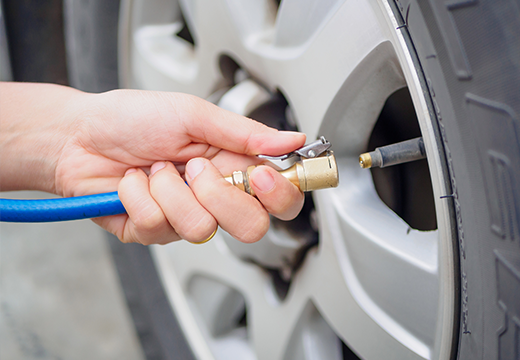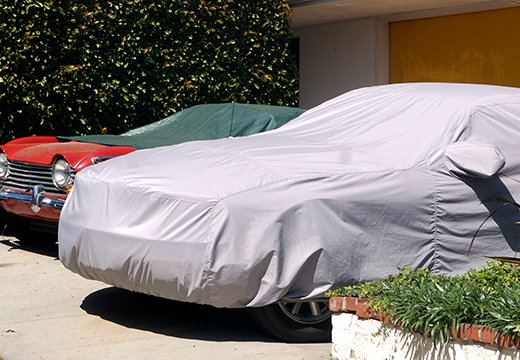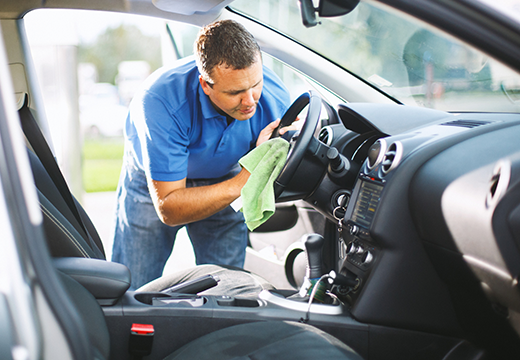
Motorists everywhere know that staying on top of car maintenance is a must.
While getting around might be as simple as buckling up, turning on the ignition and putting it into gear, there is quite a bit of action going on behind the scenes. Your vehicle is a complex machine – with many moving parts – that requires care and attention throughout the year. For those of us who are daily drivers, this seems like a pretty easy task.
However, not everyone is need of wheels as often, so their cars tend to sit idle a little longer than others. Some people are within walking distance of all their essential needs and only use their cars for long distance drives.
Regardless, if you plan on letting your car stay put for an extended period, you’ll need to be on top of its upkeep. Doing so will ensure you don’t have any surprises the next time you take it out for a spin.
Be sure to check out our list of helpful tips below to keep your car performing at its peak.
Clean it up
Although this may seem a little obvious, a thorough cleaning of your car should be one of your first steps before putting it away. Now is the time to throw out any garbage, wipe away dust and vacuum up crumbs laying inside of your ride. Forgetting to do so could not only lead to rotting food and unpleasant scents, but could also send an open invitation for pests to feed on the interior of your car.
Don’t forget to wash, polish and wax your car’s exterior so that you come back to a vehicle that looks shiny and smooth.
Read: Test your knowledge: car battery
Fill it up
This next tip might come as a surprise to some, but even though you don’t plan on using your car for a while, you should still fill up on gas before storing it. This will combat moisture from building up and rusting your tank. Adding a little bit of fuel stabilizer will prevent your gas from deteriorating, keep it at full strength and avoid corrosion in your engine and fuel lines.

Pump it up
Tires are the feet of the car. An absolute necessity, they continuously spin to get you from Point A to B. With that, they tend to experience their fair share of wear and tear, so storing your vehicle is a great way to give them some much needed rest.
Depending on the time of year and duration of storage, your tires might slowly lose pressure. Inflating them to the proper pressure will stop cracking of the side walls and any flat spots from occurring. You’ll want to repeat this step to double check for any leaks before you take your car back out.
Top it up
Just like we need water to survive, cars need fluids to function. Brake fluid, engine coolant, power steering fluid, transmission fluid, antifreeze and windshield wiper fluid are all essential components that keep your car running. Topping these up before storage will keep your car nice and full during its hibernation. An oil change and changing the air filters will help as well, but make sure you’ve taken the car out for a short drive after this as it will circulate the fresh oil inside the engine.
Read: What to pack in an emergency roadside kit

Cover it up
With Mother Nature’s unpredictability, it is highly recommended you provide your car with shelter. Your car’s paint job can experience significant damage from the elements so if possible, store it inside. If this is not an option, start researching car covers.
For best results, buy a cover that’s designed specifically for your car’s make or model so that it’s a secure fit. This will help protect from any bumps, scratches and dirt. However, if you do store your car inside, avoid using a cover. This will speed up the evaporation process for any moisture remaining in your vehicle.
Charge it up
There’s an old saying that goes, “if you don’t use it, you lose it.” This can be directly applied to your car’s battery. Despite being a large source of power, a battery can lose its charge if it sits for too long. You can work around this by hooking the battery up to a trickle charger or battery tender. These pieces of equipment will take care of your battery while not in use and make sure that it doesn’t get overcharged.
If you know that your car will be out of use for a long time, it’s best to remove the battery all-together and kept in a dry area, away from heat and sunlight.
It’s no secret that owning a car provides us with a form of freedom, but with that comes with a lot of responsibility. Taking to proper actions to maintain your cars health with keep it performing at its peak – no matter how often you drive it. If you’ve followed these tips, your car will thank you.
Click here for automotive maintenance and repair tips, and to learn more about how you can care for your car.

 Ontario
Ontario